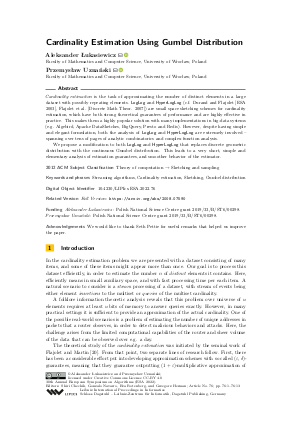LIPIcs.ESA.2022.76.pdf
- Filesize: 0.92 MB
- 13 pages

 Creative Commons Attribution 4.0 International license
Creative Commons Attribution 4.0 International license















Feedback for Dagstuhl Publishing